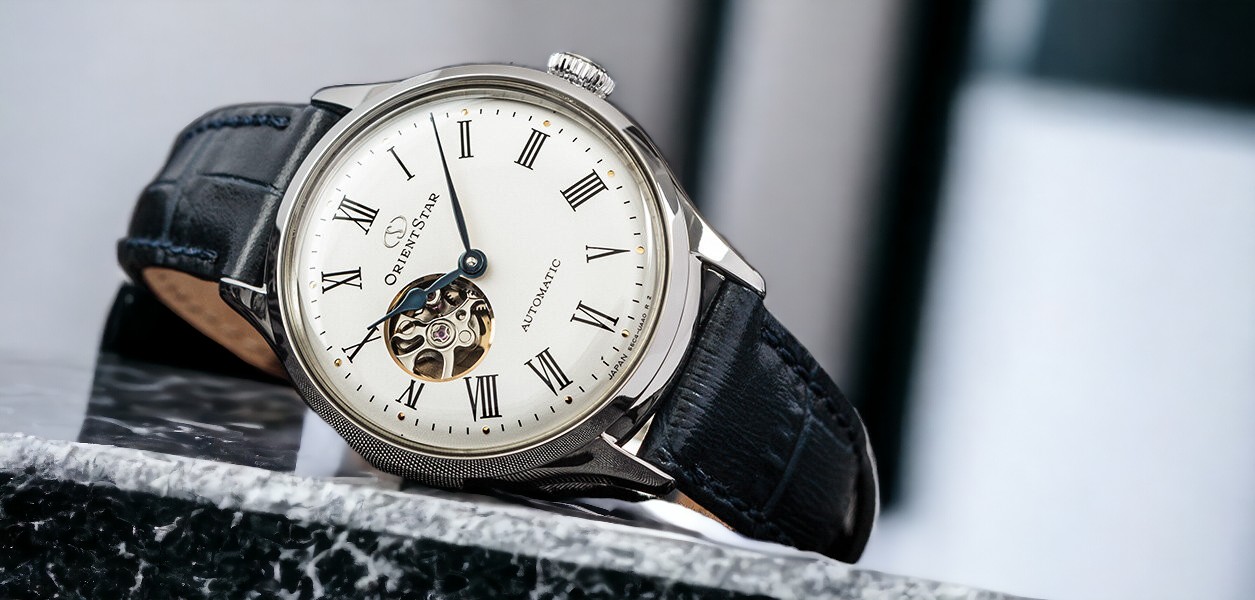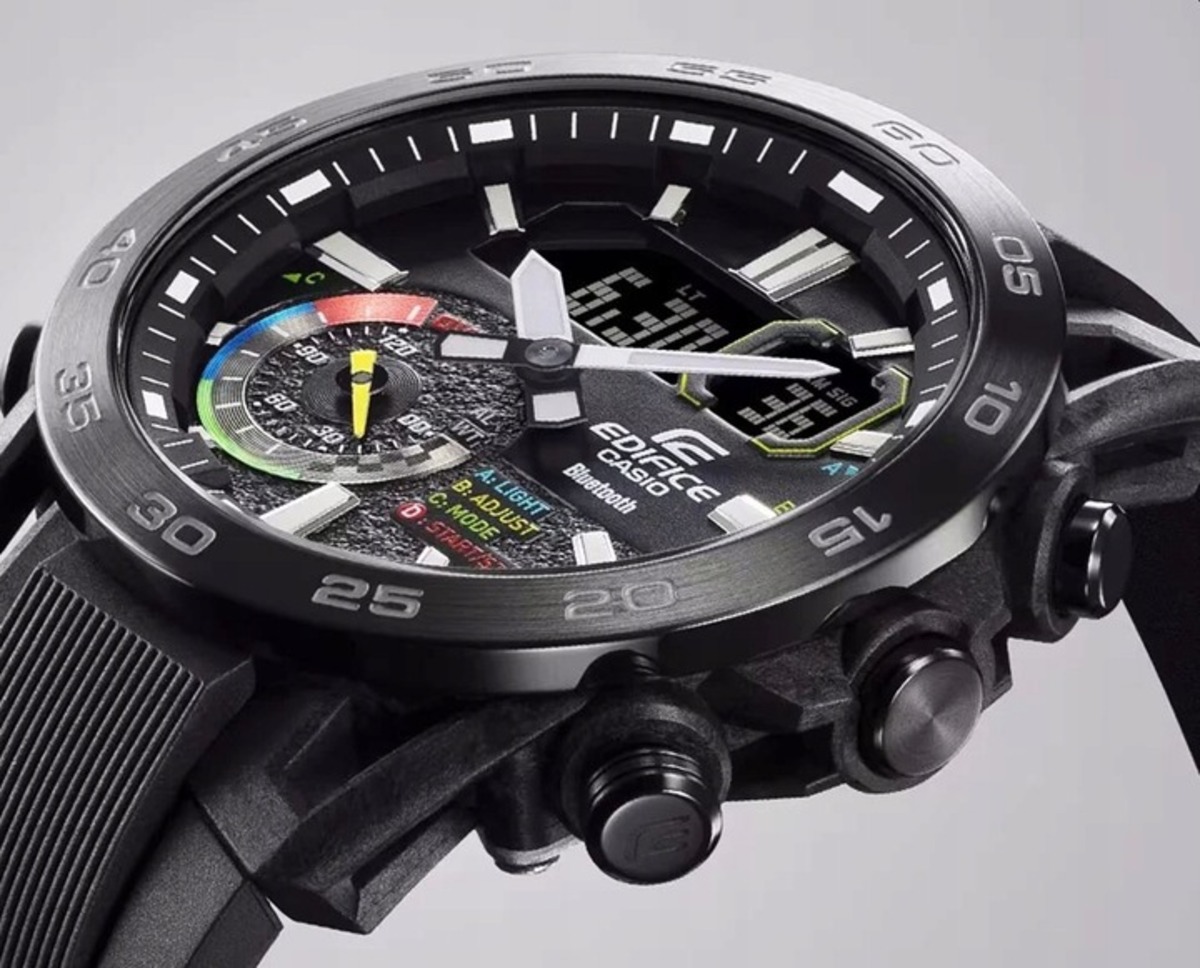Can Winding an Automatic Watch Damage the Mechanism?
Automatic watches are prized for their uniqueness and convenience compared to hand-wound mechanical watches. They function effortlessly by being worn, as wrist movements provide the energy required to power the watch. The mechanism relies on a rotor that moves with your wrist, driving a gear train that winds the mainspring. As the spring stores energy, it powers the watch for a certain period, known as the power reserve.
Manual Winding of Automatic Watches via the Crown
Many manufacturers include mechanisms that allow manual winding of automatic watches by turning the crown in one direction. This feature is especially common in mechanisms that come in various versions with different additional functions.
Does this mean you should always use it? It depends on the situation and your overall use of the watch. First, let’s review some practical aspects of automatic mechanisms.
Automatic Watches Are Designed for Wrist Movement
An automatic mechanism is fundamentally designed to be powered by wrist movements. Its intricate assembly of hundreds of components works optimally when energy is generated by the rotor rather than the crown. Therefore, it’s best to use the watch as intended. Ironically, manually winding an automatic watch may do more harm than good.
The Mechanism Has a Maximum Energy Capacity
The power reserve applies to all mechanical watches, meaning they can only store a specific amount of energy. Manually winding via the crown can cause excessive tension in the mainspring, potentially reducing its lifespan. Automatic mechanisms are designed to prevent this scenario during wrist movement, where certain components slip rather than over-tighten the spring.
Overworking the Mechanism Through Manual Winding
Manual winding forces the watch to work in ways it wasn’t optimized for. Instead of naturally cycling through winding and releasing energy, the mechanism remains perpetually wound, making the rotor’s operation redundant. This can lead to accelerated wear on various components.
When Should You Manually Wind an Automatic Watch?
Manual winding is helpful when the power reserve has been fully depleted, and you want to use the watch immediately. In such cases, carefully wind the watch by turning the crown 7–10 times back and forth, but avoid winding to its maximum capacity. Always consult the user manual to ensure proper operation, as some mechanisms don’t support manual winding.
How to Prevent the Mechanism from Stopping
The ideal solution is to prevent the watch mechanism from stopping. Wear your favorite automatic watches as often as possible! For those not worn regularly, consider using a watch winder. This device keeps the mechanism running and serves as a secure way to display your collection while maintaining optimal storage conditions.
4 Key Tips for Maintaining an Automatic Watch
- Temperature: Avoid exposing the watch to extreme temperatures, as they can damage internal components and alter the properties of protective lubricants.
- Magnetic Fields: Keep your watch away from electronics and magnetic devices, which may affect its accuracy by causing it to run fast or slow.
- Shocks and Vibrations: Avoid dropping or exposing the watch to strong vibrations, which can harm the balance wheel, mainspring, or gear train.
- Regular Servicing: Have your automatic watch serviced every 3–5 years to maintain its longevity.
A quality watch can accompany you for years or even decades if properly cared for. We hope this guide helps you keep your timepiece in peak condition. Ready to expand your collection? Explore our range of automatic watches today!
See popular articles

Why is a watch worn on the left wrist? We explore the origins of this rule!
Why is a watch worn on the left wrist? This question returns regularly, especially when someone wears it differently than most people. Although it might seem like a matter of fashion or chance, there's specific history, comfort, and watchmaking logic behind this choice. Check what really lies behind this everyday habit – and whether it's still worth sticking to it today.

Chronograph in a watch – what is it, how does it work, and what is it for?
Zegarki z chronografem od lat przyciągają uwagę nie tylko wyglądem, ale też funkcjonalnością. Choć dla wielu to po prostu dodatkowe tarczki i przyciski, w rzeczywistości kryje się za nimi precyzyjne narzędzie do pomiaru czasu. Jeśli zastanawiasz się, co to jest chronograf, jak działa i czy warto mieć go w swoim zegarku, ten artykuł pomoże Ci zrozumieć wszystko w prosty i praktyczny sposób.

What does a 5 ATM water resistance rating mean on a watch?
You see "5 ATM" marking on your watch dial and wonder what it actually means? Although it sounds technical and gives the impression of solid water protection, reality can be more complicated. Before you dive into a pool with your watch, learn the limitations and pitfalls of this popular water resistance class. This way you'll avoid costly mistakes.

Types of watch glass - learn the differences between mineral, sapphire and acrylic
Choosing the right glass in a watch is more than just a matter of aesthetics - it's a decision that affects the durability, comfort and daily use of the timepiece. Whether you're considering mineral, sapphire or acrylic glass, it's worth learning about their strengths and weaknesses in order to make an informed choice - and not just "by eye."

Which watch for manual labor? Welcome to our ranking of durable models!
Looking for a watch that can handle tough conditions and won't let you down during an intense day in the field? You've come to the right place. Not every timepiece is suitable for manual labor - some watches are fragile, prone to scratches or simply unsuited to withstand contact with dust, moisture or strong shocks. In this article we suggest which watch for manual labor will be the best choice, and present a ranking of durable models that combine durability with practical functionality.

How to clean a watch bracelet – step-by-step guide
Over time, even the nicest watch with a bracelet can lose its charm - all it takes is daily contact with skin, sweat and cosmetics. Fortunately, cleaning a watch bracelet can easily be done by yourself, without specialized equipment. In this tutorial, I will show you how to restore the luster of any watch step by step, regardless of the material of the bracelet.

Fogged watch glass – what to do when steam appears under the glass?
A fogged-up watch glass can surprise you when you least expect it - in the morning before going out, after a walk in winter or after a hot bath. It does not always mean failure, but it is never worth ignoring. Find out exactly what a fogged up watch means, where the steam under the glass comes from and how to deal with it effectively - before it's too late.

James Bond's watch – which models did Agent 007 wear?
Bond's watch is not just an accessory - it's part of Agent 007's identity. Over six decades, actors, scripts and gadgets have changed, but one thing has remained constant: there has always been a unique timepiece on James Bond's wrist. Sometimes elegant, sometimes armed with technology, but always precisely matched to the style and era. If you're wondering why James Bond watches have made such a mark on pop culture history, this guide will dispel your doubts.

Quartz movement in a watch – what does it mean and how does it work?
The quartz movement is one of the greatest achievements of modern watchmaking – precise, reliable, and virtually maintenance-free. Thanks to it, quartz watches have become an everyday standard, combining technology with ease of use. It is this inconspicuous innovation that has given timepieces a new dimension – practicality and accuracy that does not require your attention every day.











